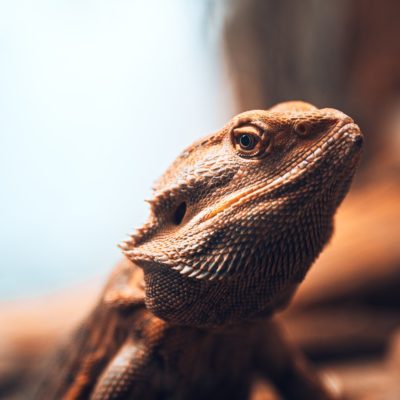Bearded dragons are one of the most popular reptile pets in the world, but did you know that there is a lot about thi lizard that most people don’t know? Read on as a vet shares some fun facts about bearded dragons.
Bearded Dragons Make for Great Pets
Bearded dragons are one of the most popular reptiles in the world, and for good reason. They’re adorable!
They’re also very easy to take care of—they don’t need to be fed live food, they don’t require a lot of space, and they can live happily in groups with other bearded dragons.
Bearded Dragons – 12 Fun Facts
Despite their popularity, there’s a lot you may not know about bearded dragons. Here are some fun facts we’ve learned about bearded dragons over the years:
- Bearded dragons are native to Australia.
- Bearded dragons have been around since the time of dinosaurs!
- The name “bearded dragon” comes from their beard-like spines on their chin. These spines are used as a defense mechanism—when threatened or attacked by predators, bearded dragons will puff up and display these spines to scare off potential attackers.
- When bearded dragons are born, they’re about the size of your pinky finger nail.
- Bearded dragons are capable of swimming! They can hold their breath for up to two minutes at a time.
- Bearded dragons have amazing vision and hearing—they can see in color, and can even see things that are moving behind them by using their “parietal eye” (a small gap in their skull).
- Bearded dragons are omnivores—they eat both plants and meat! Their favorite foods include fruit (think apples), kale, collard greens, dandelions (yum!), carrots, cucumbers… and more!
- Bearded dragons are very sociable creatures—they enjoy being around other bearded dragons and will often live together in groups.
- Bearded dragons are one of only two species of lizards that can actually change color! -Bearded dragons are a perfect pet for kids! They’re fun, friendly and easy to care for.
- Bearded dragons are very social—they enjoy spending time with their human friends. Bearded dragons have a very special relationship with their owners. They are often affectionate and will often nuzzle into the hand of the person who cares for them.
- Bearded dragons are omnivores—they eat both plants and meat! Their favorite foods include fruit (think apples), kale, collard greens, dandelions (yum!), carrots, cucumbers…and more!
- Bearded dragons are one of only two species of lizards that can actually change color!
If you have more questions or wish to schedule your “dragon” for a checkup, call our vet office in Live Oak, FL anytime!



